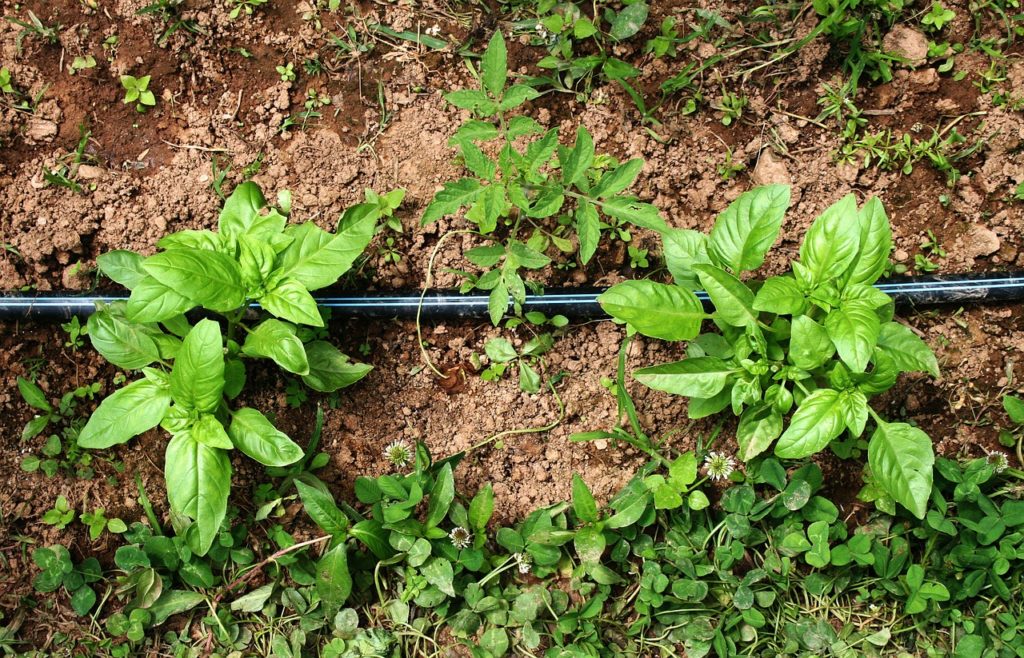Blog
Watering Your Organic Terrace Vegetable Garden – When and How

Watering Your Organic Terrace Vegetable Garden – When and How
Watering your organic terrace garden doesn’t mean that you pour some water to the plants and forget them, there is more to it. You need to know when exactly you need to water and when not.
Keeping the soil or the potting mixture moist is a prerequisite, but how you achieve it is also important. Each type of gardening requires a different type of watering technique. In terrace gardening, watering is mainly done effectively through the following self -watering containers, sprinkler or drip irrigation system.
Watering Container Garden
When you grow organic vegetable in terrace using containers, the best option would be the ‘Self-watering’ containers. It is a new gardening concept. In these containers, the drainage holes are replaced by overflow holes.
Excess water gets collected in a collector through the overflow holes. This water can later be recycled again so that the nutrients and water don’t go waste.
The container where the plants grow sits on a perforated platform above a water reservoir. Roots of the plants grow through this medium. Extra water and nutrients get collected in the reservoir, which can be re-cycled. In this technique, water and nutrients are not wasted.
Drip Irrigation

The basic concept of drip irrigation was formed to efficiently save almost 80% of water which was wasted as part of flood irrigation. There are lots of methods to implement the drip irrigation in your organic terrace vegetable garden.
Drip irrigation can be done even using a wick and a bottle. But the concept remains the same – Gradual outflow of water.
Planning is very important in Drip irrigation. The watering needs of each plant, its exposure to heat and light, and soil types should be taken into account while constructing drip irrigation. The drip tubes are laid all around the garden to supply water to plants. Installation of micro-sprinkler heads or porous pipe (the most common and cheapest) or evenly spaced emitters is done based on the gardening requirements.
The advantage of Drip Irrigation is that it can also be automated.
Also read
Trapping The Insects That Attack Your Organic Vegetable Garden Using Insect Traps
Sprinkler

Use of sprinkler is limited in terrace gardening because it would be wasted on the terrace, however if you are planning to convert larger areas of your terrace into organic terrace vegetable garden, sprinkler can be used.
You tend to use less water and keep the soil moist throughout.
General Care Tips
- Watering the plants is a “must” activity. During summer, plants need to be watered twice and during winter, the soil has to be checked for moisture content before watering. Checking for moisture can be done by pressing the soil with the back of your hands. During rains, watering is a big no-no.
- Water-proofing must be done to the terrace prior to terrace gardening. This will avoid any leakage into the building during watering of plants. There are PVC polymerized sheets available for effective water proofing.
- There should be proper slope to drain the water for the healthy growth of the plants. A proper drainage system should be designed so that even during heavy rains the water percolates to the base of the system.
- Irrigation is required in places where water should reach deep inside so that roots can absorb it before the water is lost in evaporation.
- Some plants like onion and potato need to be watered only at certain times, over watering these crops may lead to lead development and you may end up getting no vegetables.
Quick DIY Organic Pesticides You Can Make At Home For Your Organic Vegetable Garden


